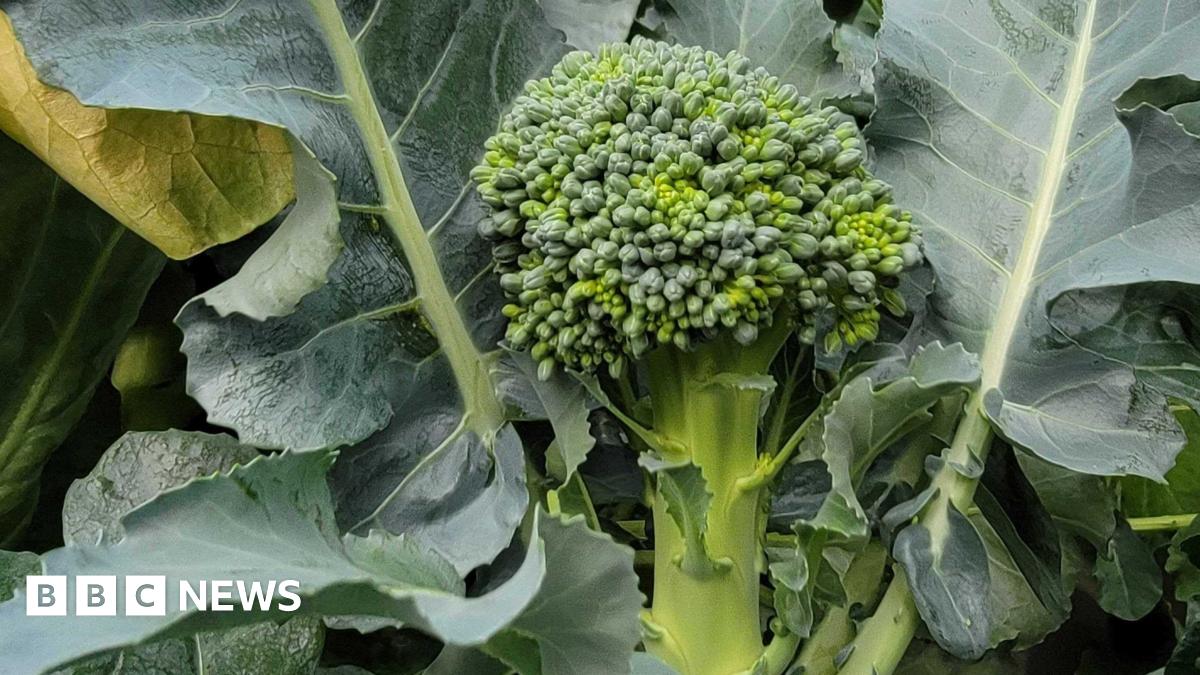
'We are creating new crops five-times faster'
How artificial intelligence is increasingly helping the arable farming sector.


This has been obvious ever since the 1990s, even with signs of it in the 1980s. And it's not just resources, it's about controlling power."The big story of the 21st century’: is this the most shocking documentary of the year?
Six years in the making, jaw-dropping new film The Grab shows a secret scramble by governments and private firms to buy up global resources"


Your mobile phone with modern technology can transmit a few miles. If you see an outside live BBC broadcast, they use a massive dish antenna on a truck to broadcast about 50 miles. The guys on the moon needed to transmit 1/2 million miles, and signal strength is an inverse square law, so you need 100 times the power to transmit 10 times as far. An average mobile TV transmitter uses around 8kw to transmit 50 miles. It would need 800kw to transmit 500 miles, and 800MW to transmit from the moon. Let's say, there isn't as much information in the moon broadcast as normal TV. To get it down to the level of a couple of hundred watts, which is about as much as they could spare, the information would have to be 1/ 4,000,000 of a normal TV broadcast. The antennae on the lander were about the size of a frying pan. What do you reckon?

Then why does my mobile phone signal keep dropping out when I phone my friends? I have a dish on the side of my house too.
Voyager 1 Is Back! Legendary Probe Makes Contact From Interstellar Space
A friendly voice we've been longing to hear is drifting back to us from interstellar space, 24 billion kilometers away (15 billion miles).www.sciencealert.com
!5 billion miles away, a 47 year old broken computer has been sent a work around so that its dud chip can be ignored and the message processing is corrected.
It's tiny 23 watt signal is still getting through albeit that the data rate has now been slowed to 40 bits per second so it can be detected by massive dishes at Goldstone and in other locations depending on which part of Earth is facing the space craft at any particular time.
Might be because your phone's battery is shagged out and can't supply enough continuous current for the chipset to juggle lower bitrate codecs for lower/fluctuating signal during long calls. Your phone might also be doing a huge number of other things at the same time. In my case, the phone is recording all phone calls, which is an additional overhead. I'm thinking of replacing my old phone's battery for that reason, while new replacements are available - won't do any good if network operators drop long calls during busy periods as a matter of policy, while advertising "Unlimited" minutes in call packages. Bit like when the likes of Virginmedia broadband advertises "Unlimited" downloads, but then aggressively shapes traffic, the brigands.Then why does my mobile phone signal keep dropping out when I phone my friends? I have a dish on the side of my house too.
Tell me about it..... People constantly can't get through to me unless I force my phone to only connect to the base station with 2g. I live in a hollow, with no line of sight to any antenna mast. 2g is low bandwidth. It passes data at a low bit rate, which makes the connection much more robust than high bandwidth, fast data rate comms.Then why does my mobile phone signal keep dropping out when I phone my friends? I have a dish on the side of my house too.
Talking of radios, here's a funny anecdote. Members Saneagle and D8veh were out for a ride and enjoying their new communication with their Maplin 2-way radios.Tell me about it..... People constantly can't get through to me unless I force my phone to only connect to the base station with 2g. I live in a hollow, with no line of sight to any antenna mast. 2g is low bandwidth. It passes data at a low bit rate, which makes the connection much more robust than high bandwidth, fast data rate comms.
If you can't connect, try in settings on your phone forcing 2g connection. That will depend on your provider though. Some like '3' only do 3g/4g and 5g. All of them are data hogs. On my android phone the option to change the mode is under settings/connections/mobile networks/network mode..... Try it.
Voyager is now running about 40 bits per second
4g runs between 8 and 10 million bits per second
3g runs 1 million bits per second
2g runs 30 to 50 thousand bits per second
The less data you are passing over the link, the more solid the connection even in weak signal conditions.
It's not rocket science - even if it nearly is.
Don't try connecting with 5 g unless you are right next to the base station. It runs speeds as high as 100 million bits per second. More data means you must have more signal strength.
I run a hobby, amateur radio, low power radio beacon at 1.4 bits per second. With 2 watts out - about the same power as a mobile phone, I can regularly get picked up in Australia. The only reason it works is that it is VERY low data rate.
Bet that put the frighteners on them.Talking of radios, here's a funny anecdote. Members Saneagle and D8veh were out for a ride and enjoying their new communication with their Maplin 2-way radios.
Riding along a nice lane deep in the countryside, the radio silence was suddenly broken by: "Up there under the bushes. Get the dogs quick. Push, push push."
We looked at each other for a bit, then Saneagle presses his PTT button and says:
"Alpha 1 to Alpha 2. I think I've spotted them up the hill by the bushes with the dogs"
Daveh: " Alpha 1, Alpha 2. I'll sweep round from the South and try and cut them off if you can attempt to intercept from the East"
We didn't hear any more, as we continued pedalling up the road. In fact we could hardly pedal because we were creased up with laughter.
We've no idea who it was or where they were, but we assumed that there were some guys panicking somewhere doing some cruel illegal activity with dogs. Range was only a couple of miles, so they might have been nearby somewhere.
it's a feature of the PLL circuit.It's not rocket science - even if it nearly is.

 arstechnica.com
arstechnica.com
current best e-bike cells like the 21700 5000mAH has a volume of 24cm3. You can easily estimate the density of it in WH/L: 5WH*100*100*100/24=208WH/L"1,000 watt-hours per liter, which is about 100 times greater than TDK’s current battery in mass production."





